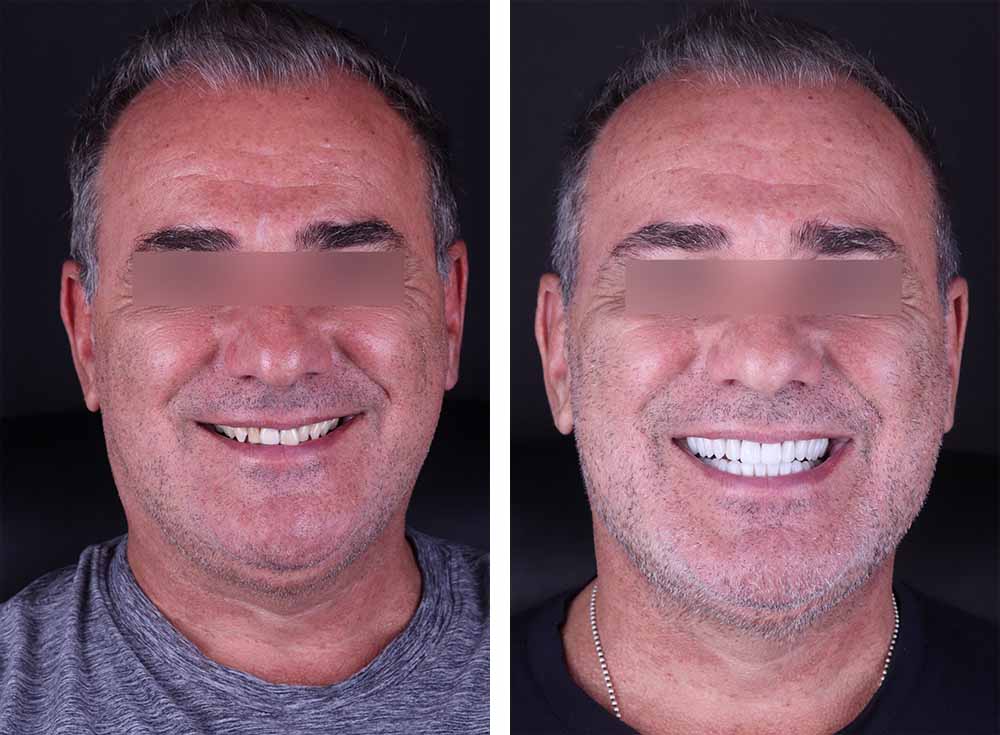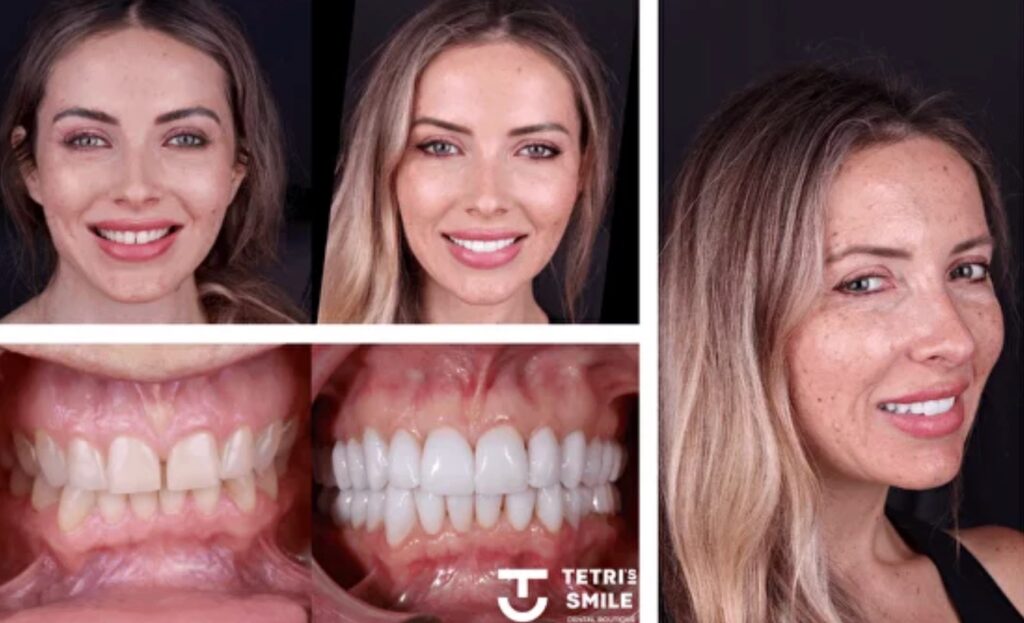Worn Teeth

Have you noticed that your teeth are wearing down? This can lead to enamel erosion, sensitivity, and pain. Often, this is caused by temporomandibular joint (TMJ) dysfunction.
There are many methods to treat this issue, among which is neuromuscular dentistry. In this article, we will discuss the causes, symptoms, and treatment options for tooth wear. We aim to help you maintain strong and healthy teeth!
What is Tooth Wear?
Tooth wear is the gradual loss of tooth structure over time. The upper layer, known as “enamel,” weakens and thins out. It is a slow process, and as the enamel wears away, the dentin layer beneath becomes exposed. The tooth may become sensitive, and bacteria can enter the grooves. If not cleaned properly, this can lead to tooth decay or pulpitis. It’s better not to delay treatment to avoid losing the tooth
How can I determine if I have tooth wear?
Observe the following factors to determine if you have tooth wear:
Grooves or unevenness become visible on the enamel
Plaque accumulates in the grooves, leading to the appearance of black spots or stripes
Discomfort or pain may occur with hot, cold, sour, or sweet substances
Important!
The rate of tooth wear can vary. I recommend maintaining good oral hygiene. If you notice any minor signs, schedule an appointment with a dentist. It is essential to undergo preventive measures to stop tooth wear and protect the enamel.
How are worn down teeth treated?
The treatment method depends on the degree of enamel wear. Patients may be advised to restore several teeth or opt for a full-mouth reconstruction.
We offer a unique planning tool called Tetri’s Smile™ Digital Smile Design. The patient receives a preview of their new smile in advance.
However, it’s not just about creating a beautiful image. First, we conduct a thorough diagnosis to study the natural bite, bite height, facial muscle condition, and TMJ (temporomandibular joint).
The final result aims for a comfortable bite and facial proportion restoration. As a result of proper jaw alignment, wrinkles are smoothed, resulting in Tetri’s Face Lift.

Case Studies of Treatment for Worn-Down Teeth
Case 3

A patient with severe bruxism had significantly worn down teeth. The dentist prescribed a full restoration and placed ceramic crowns on the damaged teeth.
Case 25

A patient with bruxism complained about severe wear of the front teeth. They requested a replacement for an implant that was showing through the gum. The doctor diagnosed a bite problem.
Tetri’s Smile™ Digital Smile Design was conducted, showing the patient the new smile with the correct bite. Treatment began with gingivoplasty to correct the gum contour. Proper tooth proportions were restored using ceramic veneers.
The patient immediately noticed a change in their face, particularly the lower third. Wrinkles significantly reduced, and the double chin disappeared.
Case 26

This patient had difficulty chewing due to an incorrect bite and was dissatisfied with their smile. The teeth were extensively chipped due to bruxism.
Dr. Tetri performed a complete oral rehabilitation in one day. The patient already had 2 implants on the upper jaw and 6 on the lower jaw. Damaged prosthetics and roots with untreated infections were removed. Bone grafting was conducted, and implants with ceramic crowns were placed.
The patient’s bite became even, allowing them to chew normally without increased sensitivity. The correct smile line visually rejuvenated their face.
Causes of Tooth Wear
Chemical erosion of enamel occurs when it comes into contact with acidic foods or beverages. Acids dissolve the mineral composition of the enamel. Without comprehensive hygiene at the dental clinic, the thinning will happen faster.
Mechanical wear happens due to friction and pressure. Tooth grinding (bruxism) often leads to this type of wear. Aggressive tooth brushing or using a toothbrush with hard bristles can also contribute to it.
Diseases can also cause wear. Besides bruxism, problems with the temporomandibular joint, malocclusion, or tooth loss can lead to enamel wear.
Worn-Down Front Teeth
The front row of teeth wears down due to improper bite or tooth grinding (bruxism). Frequent friction between the upper and lower teeth erodes the edges of the incisors. The temporomandibular joint becomes excessively burdened during biting and chewing.
Veneers add thickness and cover areas with worn enamel. They provide a protective layer for the dentin. Worn teeth can lose their color and shape. The dentist can select a color to enhance the aesthetics of the smile.
Case 1

Example of restoring worn down front teeth:
This patient had worn down front teeth due to bruxism. She suffered from sensitivity, jaw pain, and neck pain. The dentist conducted a course of neuromuscular dentistry to restore the function of the temporomandibular joint. Porcelain veneers were placed on the front teeth.
An incorrect bite is often the main cause of worn down front teeth and hence orthodontic correction is needed, not just the placement of veneers.
Worn-Down Molars
Frequent clenching of molars leads to uneven wear. It occurs in cases of improper bite, where the upper row does not fit snugly against the lower row. Molars are often significantly damaged by cavities, leading to enamel chipping or crumbling.
To restore worn molars, the following methods are used:
Treating Tooth Wear
The dentist learns about the problem and symptoms, examines the teeth, gums, and evaluates the temporomandibular joint's function.
Dental X-rays of the dental arch are taken. A digital Mock Up is created to predict all treatment steps.
The treatment method depends on the extent of the damage. The dentist may perform restoration with veneers, crowns, or inlays. In case of a malocclusion, orthodontic treatment with braces might be necessary. If multiple teeth are damaged, fixed prosthetics on implants may be installed.
The dentist schedules regular check-ups to consolidate the results. As the restoration progresses, adjustments may be made to the treatment. The dentist provides recommendations on individual oral hygiene and additional precautionary measures.
Complications of Tooth Wear if Left Untreated
Leaving worn-down teeth untreated can lead to several pathologies, including:
Jaw, neck, or headache pain (problems with the temporomandibular joint)
Accumulation of infection in the damaged dentin leading to tooth decay and nerve inflammation
Incorrect occlusion (uneven wearing of chewing and cutting surfaces)
Difficulties with biting and chewing
Tooth sensitivity (direct response to the wear)
Loss of fillings
Limit acidic and sugary foods/beverages
Use a toothbrush with medium hardness
Avoid abrasive toothpaste
Avoid brushing teeth immediately after consuming acidic/sugary foods or beverages. Enamel softens and wears down faster
Chew sugar-free gum after meals to stimulate saliva production and remove acids
Stay hydrated by drinking water throughout the day
If you have bruxism, wear a protective night guard
Over time, composite materials experience shrinkage. Gaps can appear between the dentin and the restoration, allowing saliva and microbes to penetrate. This can lead to the formation of cavities under the composite, resulting in rapid deterioration of the filling or even damage to the root.
Before commencing the cosmetic dental restoration procedure, the dentist develops an accurate digital prototype of the future teeth (mock-up). Then, it is merged with the patient’s photograph. This way, the individual can “try on” their new smile in advance and assess the treatment’s effects.

